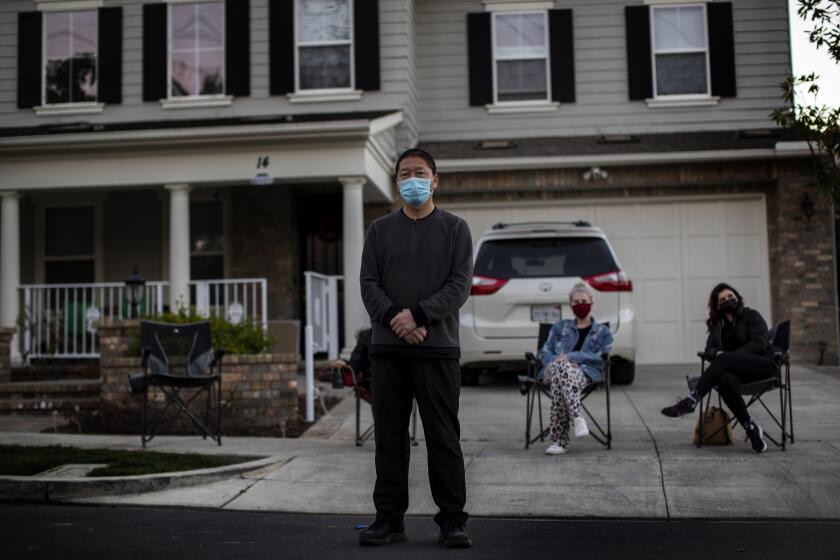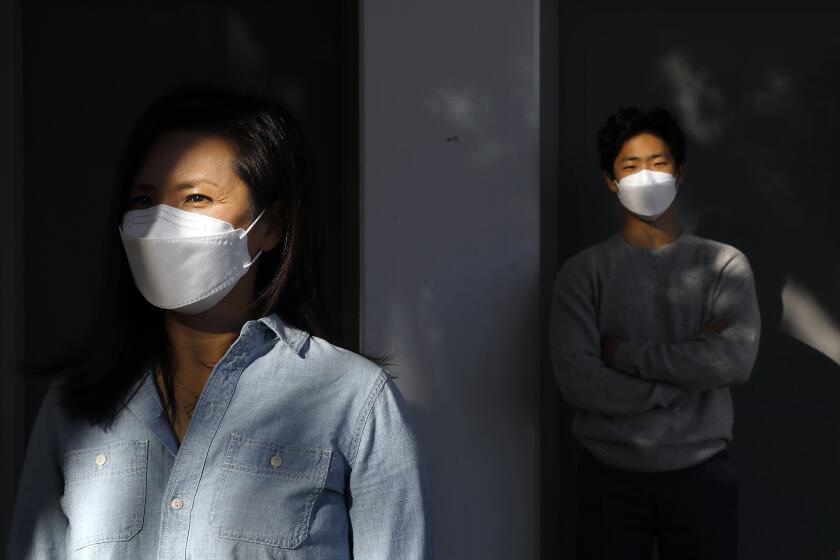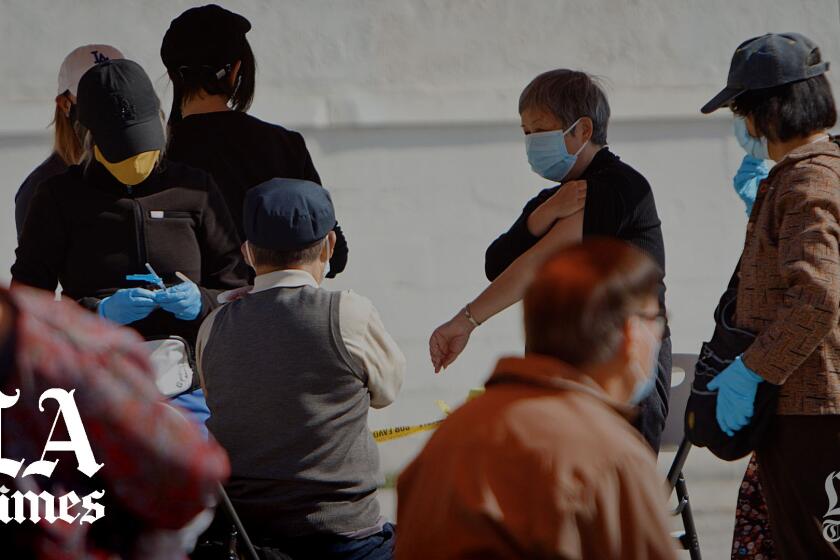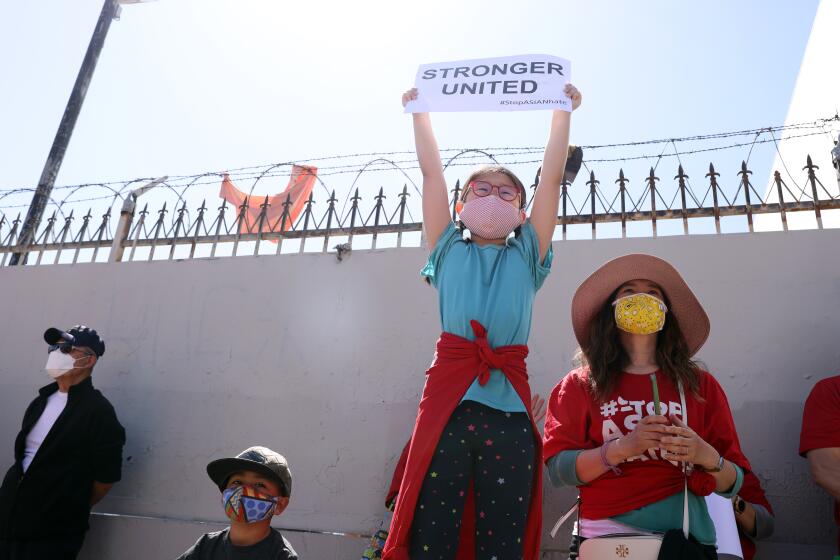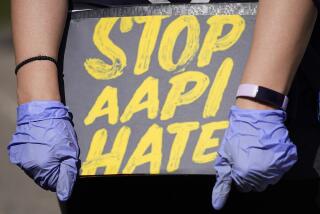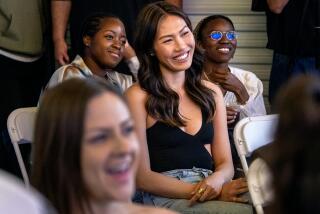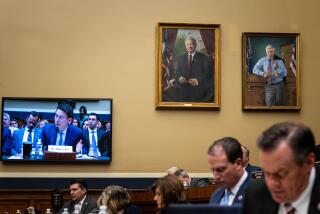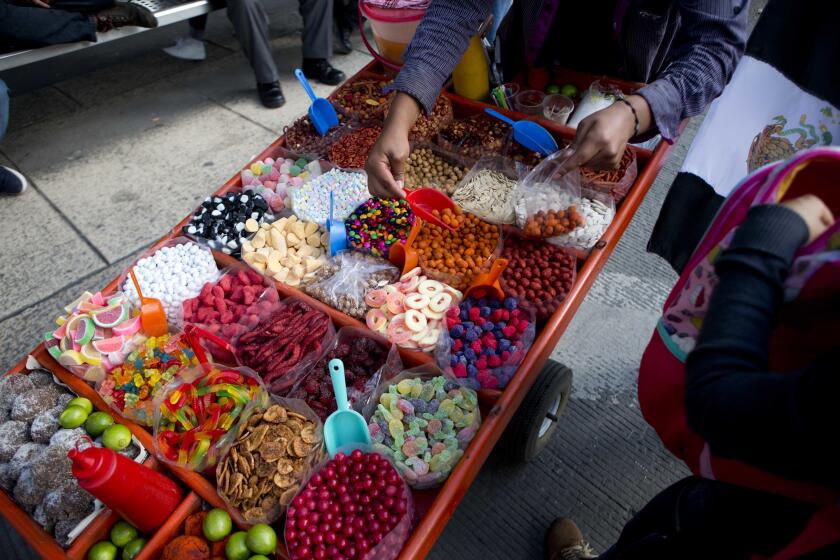Asian American healthcare workers fight the coronavirus — and racist attacks
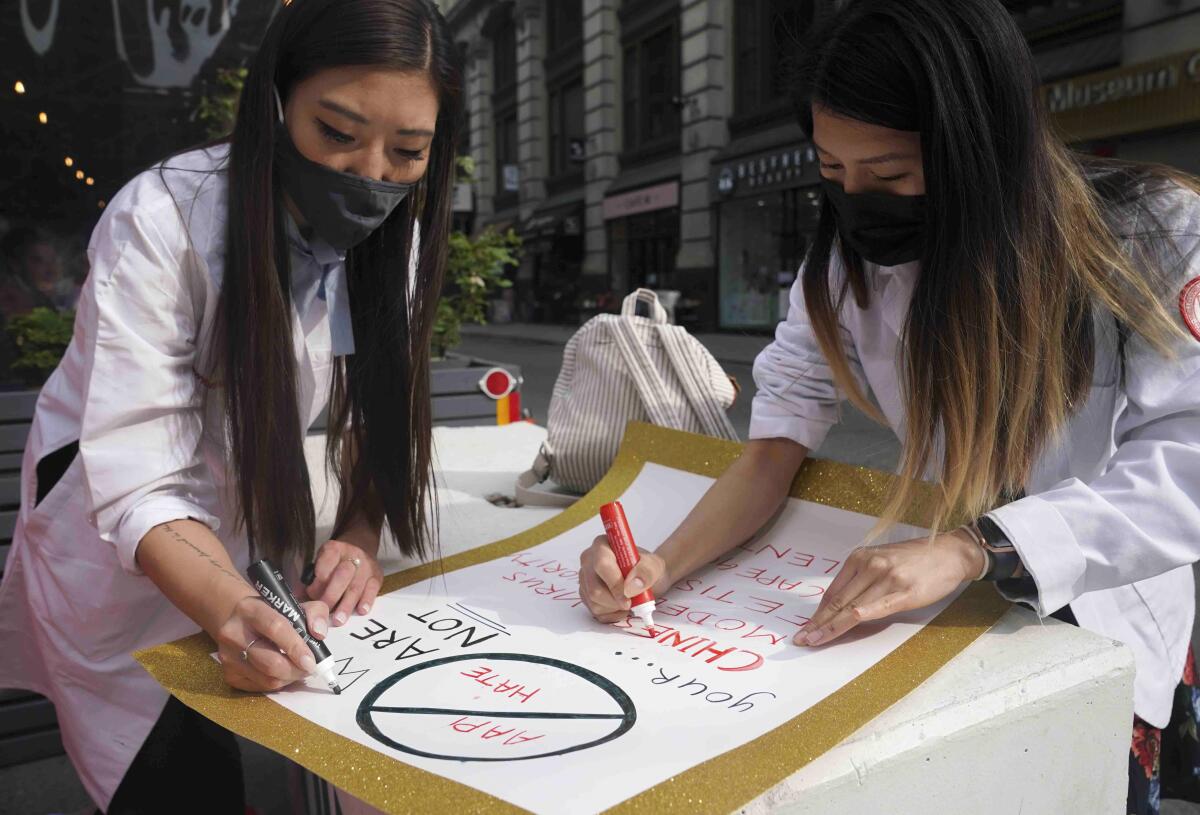
NEW YORK — Medical student Natty Jumreornvong has a vaccine and protective gear to shield her from the coronavirus. But she couldn’t avoid exposure to the anti-Asian bigotry that pulsed to the surface after the pathogen was first identified in China.
Psychiatry patients have called her by a racist slur for the disease, she said. A bystander spat at her, telling her to “go back to China” as she left the New York hospital where she’s training.
And as she walked there in scrubs Feb. 15, a man came up to her, snarled, “Chinese virus,” took her cellphone and dragged her along a sidewalk, said Jumreornvong, who reported the attack to police. The investigation is ongoing.
For healthcare workers of Asian and Pacific Islander descent, “it seems like we’re fighting multiple battles at the same time — not just COVID-19, but also racism,” said the Thailand-born Jumreornvong, a student at the Icahn School of Medicine at Mount Sinai.
Asian Americans and Pacific Islanders have faced a tide of harassment and attacks in many settings during the pandemic. But those in healthcare are feeling the particular, jarring anguish of being racially targeted because of the coronavirus while working to keep people from dying of it.
“People in my community have gone from being a healthcare hero to, somehow, a scapegoat,” said Dr. Michelle Lee, a radiology resident in New York. She rallied 100 white-coated medical workers in March to denounce anti-Asian hate crimes.
Even if the Chinese government bears responsibility for the pandemic, it’s racist and nonsensical for people to target Asian Americans.
“We’re not bringing you the virus,” said Lee, who recalled strangers on the street spitting on her twice in the last year. “We are literally trying to help you get rid of the virus.”
People of Asian and Pacific Islander descent make up about 6% to 8% of the U.S. population but a greater share of some healthcare professions, including around 20% of non-surgeon physicians and pharmacists and 12% to 15% of surgeons, physical therapists and physician assistants, according to federal statistics.
Before the pandemic, studies found that 31% to 50% of doctors of Asian heritage experienced on-the-job discrimination ranging from patients refusing their care to difficulty finding mentors. That’s a lower proportion than Black physicians, but higher than Latino and white doctors, according to a 2020 study that reviewed existing research.
In a separate 2020 study of medical residents, all those of Asian heritage said patients had quizzed them about their ethnicity.
COVID-19: Many Asian Americans and immigrants in the San Gabriel Valley wore masks way ahead of others out of courtesy
Columbia University medical student Hueyjong “Huey” Shih recalls being confronted with “a lot of assumptions, all boiled into one very inappropriate question” from a colleague in a hospital: Was Shih an only child because of China’s former one-child policy?
The Maryland-born Shih, whose family hails from Taiwan, said the colleague apologized after being set straight. Writing for the health news site Stat, he and medical students Jesper Ke and Kate E. Lee implored health institutions to include Asian Americans’ and Pacific Islanders’ experiences in anti-racism training.
For generations, Asian Americans have contended with being perceived as “perpetual foreigners” in a country with a history of treating them as threats. Officials wrongly blamed San Francisco’s Chinatown for an 1870s smallpox outbreak, barred many Chinese immigrants under the 1882 Chinese Exclusion Act and forced Japanese Americans into internment camps even as tens of thousands of their relatives served in the U.S. military during World War II.
During the pandemic, former President Trump repeatedly called COVID-19 the “China virus” and other terms that activists say fanned anger at Asian Americans.
Governments rely on data that doesn’t differentiate between groups of Asian Americans , but wealth gaps, language barriers, technology can all make a big difference
Police reports of anti-Asian hate crimes in 26 big U.S. cities and counties shot up 146% last year, while hate crimes overall rose 2%, according to Cal State San Bernardino’s Center for the Study of Hate and Extremism. The advocacy group Stop AAPI Hate fielded nearly 3,800 reports of assault, harassment and discrimination from mid-March 2020 through the end of February — before a gunman killed eight people, including six women of Asian heritage, at Atlanta-area massage businesses in March.
The statistics don’t break out healthcare workers among the victims.
The escalation “makes racism seem a lot scarier than the virus” to Dr. Amy Zhang, an anesthesiology resident at the University of Washington’s hospitals.
“It’s a constant fear. You never know when you’re going to get targeted,” she says.
News Alerts
Get breaking news, investigations, analysis and more signature journalism from the Los Angeles Times in your inbox.
You may occasionally receive promotional content from the Los Angeles Times.
Early in the pandemic, she came face to face with the risk of COVID-19 while intubating patients. And face to face with racism when a white man on the street muttered a vulgarity at her about China and “giving us smallpox,” then started following her while yelling racial epithets and sexual threats until she got inside the hospital, she said.
“Despite the fact that I clawed myself out of poverty to chase the American dream, despite the fact that I can and have saved lives under stressful conditions, none of this protects me from racist vitriol,” Zhang wrote in Crosscut, a Pacific Northwest news site. She’s a daughter of Chinese immigrants who worked long hours for low wages.
These days in New York, Ida Chen, who is studying to be a physician’s assistant, carries pepper spray all the time, sets her cellphone to let all her friends know her location and doesn’t roam far alone. For a time, she hid the roots of her dark brown hair under a hat so only the dyed blond ends would show.
She started taking those precautions after a man biked up to her on a Manhattan street in March 2020 and sneered that he’d be “into you, but I don’t want to get the coronavirus,” then followed her while hollering slurs until she called 911, she said.
The move by the county Board of Supervisors follows several violent attacks against Asian Americans and would explore how to better combat hate crimes in the county.
“I went into medicine thinking: I treat people with the best intention possible,” said Chen, who has Chinese heritage. “It hurts that someone’s not reciprocating that kind of empathy and good intentions.”
Jumreornvong, who identifies as queer, said she had experienced discrimination before. But it felt different to be targeted because of her race.
“For a moment, I was a little pessimistic about whether or not the people want me here,” she said. But she focused on how colleagues rallied around her, how the hospital expressed support, how patients have shown appreciation for her work.
“I still do believe in the best of America,” she said.
More to Read
Sign up for Essential California
The most important California stories and recommendations in your inbox every morning.
You may occasionally receive promotional content from the Los Angeles Times.
